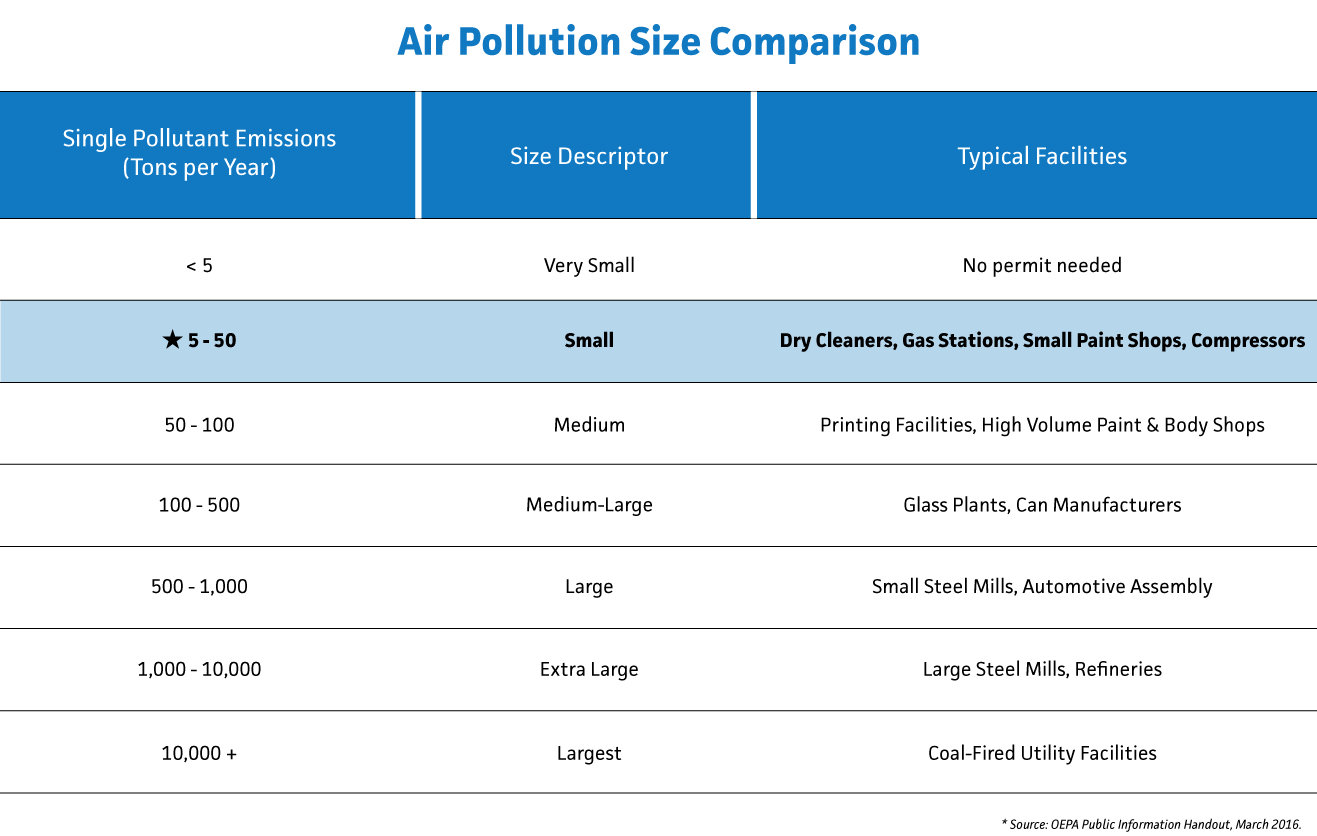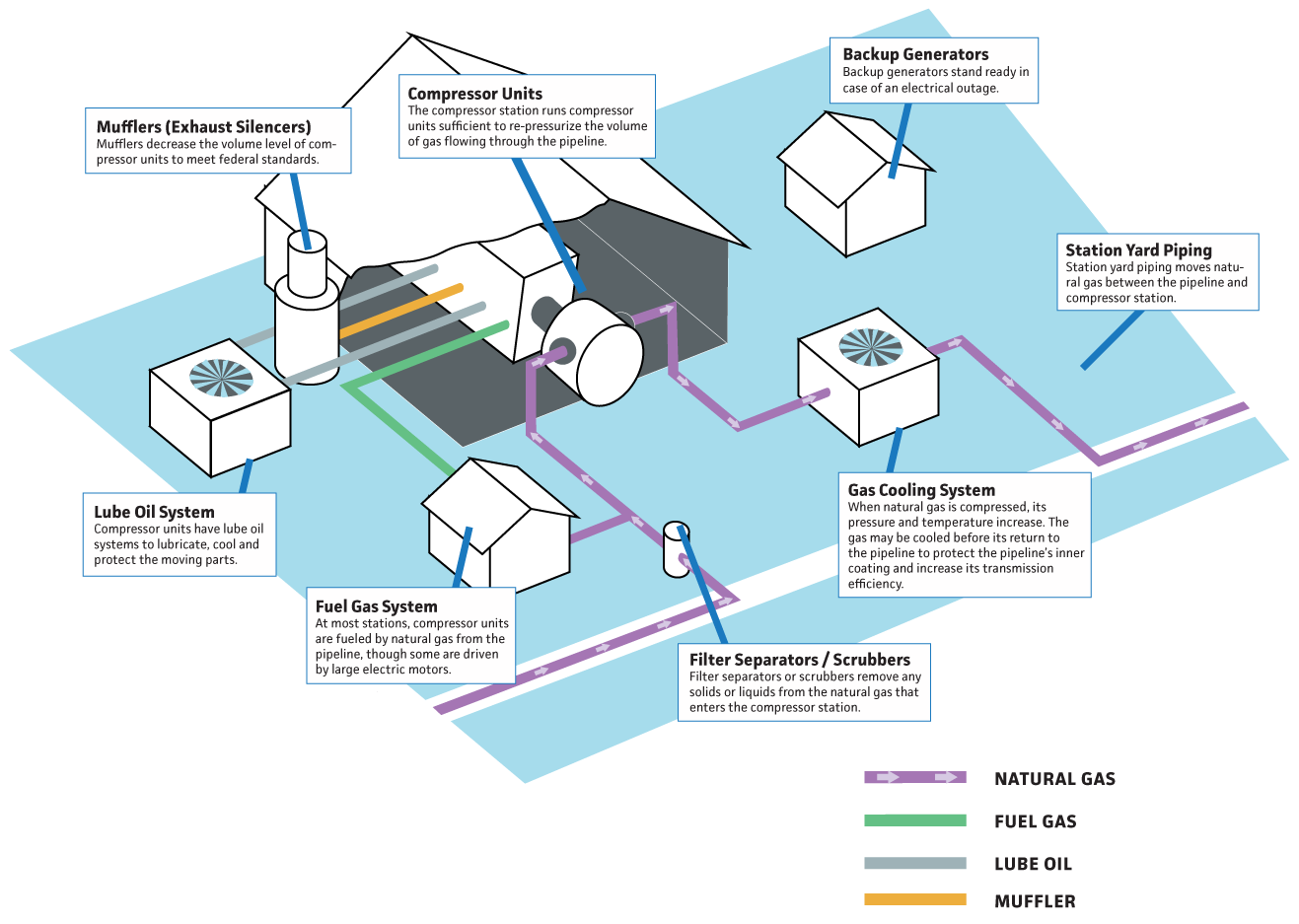Compressor Stations
To ensure that the gas continues to flow optimally through the interstate pipeline system, it must be periodically compressed and pushed through the pipeline. Over distance, friction and elevation differences slow the gas and reduce pressure, so compressor stations are placed about 70 miles apart along the pipeline to give the gas an occasional “boost.” These stations operate day and night, year-round to push gas through the pipeline.
Compressor stations integrate a variety of safety systems and practices to protect the public and station employees and properties. For example, every station has an emergency shutdown system that stops the compressor units, isolates and vents the compressor station gas piping, and diverts gas in the pipeline around the station. All compressor stations are monitored around the clock by highly-trained personnel at a centralized gas control center.
The turbines that drive the gas compressors are fueled by clean-burning natural gas and utilize state-of-the-art emission control technology, such as exhaust catalyst oxidation systems, to achieve emission rates significantly lower than what is required by federal and state regulations. Through the use of these modern emissions control technologies, it is expected that regulators will classify each of NEXUS’s compressor stations as only minor sources of air emissions. Stations are also designed and constructed to minimize noise impacts to surrounding communities and wildlife.
The following chart from the Ohio EPA compares emissions from compressors to other known sources. As evident, the permitted emissions of the proposed NEXUS compressor stations compare to dry cleaners, gas stations, and small paint shops.
-
How Do Compressor Stations Work?

A typical compressor station consists of yard piping and compressor unit(s), a gas or electric power source, safety systems and personnel, all working together for the safe and efficient transmission of natural gas. Below is an illustrated diagram of a compressor station, along with brief explanations of each major component of the station.

